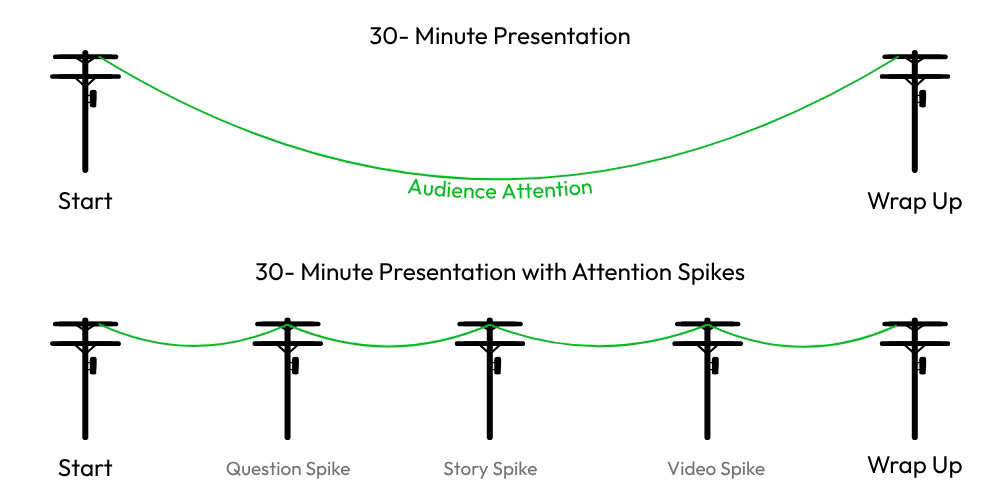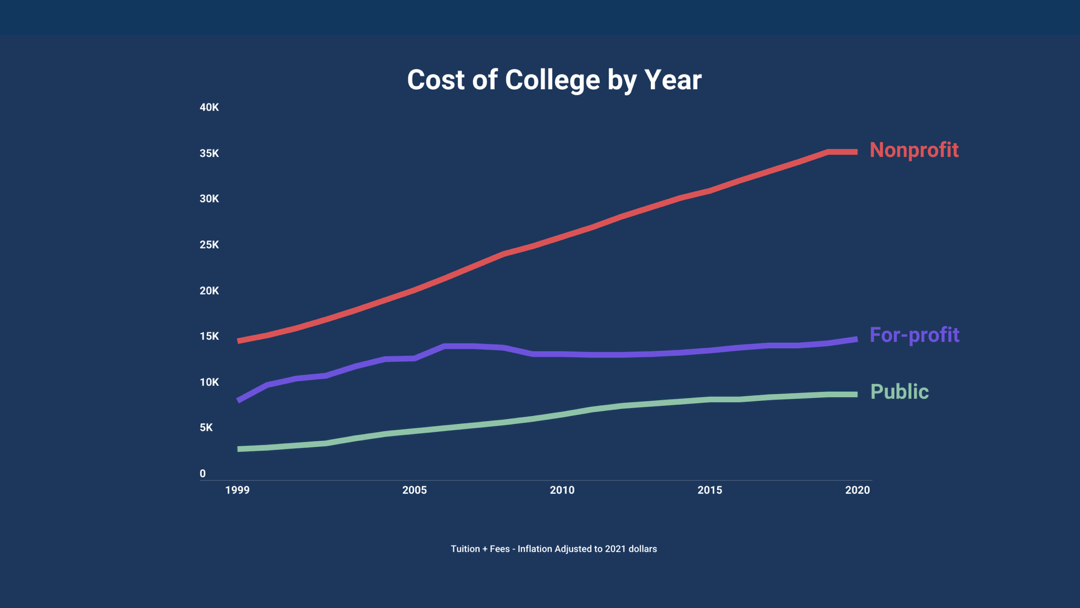Spikes: The 10-Minute Rule for Holding Attention
How to Keep Your Audience from Zoning Out
A few weeks ago, I sat listening to a speaker at a training.
I wanted to learn… check.
The speaker was enjoyable… check.
The topic was interesting… check.
But my mind wandered as we waded through slide after slide. I was stuck between wanting to focus and feeling pulled by everything else competing for my attention.
We’ve all been here. We want to pay attention, but our focus fades.
And when you’re the one speaking, you definitely don’t want this to happen to your audience.
One way to avoid it is by incorporating attention spikes.
I first learned this concept from a trainer named Kevan Kjar. Kevan described it as thinking of your audience’s attention like a power line: if you have too much distance between interesting things, the line dips lower and lower.
The solution is simple: install a few extra “power poles”1 along the way to spike attention and keep it up.
This isn’t about tricking your audience or startling them. It’s about helping them re-engage their thinking and energy so they’re actively listening and not just passively absorbing.
5 Ways to Create Attention Spikes:
1. Ask a Question
Use a focus question or something that makes the audience think: “How does this apply to me?”
A simple prompt plus a 30-second timer on screen can refocus attention.
“Think about an upcoming presentation you have. Take 30 seconds and pick one of these spikes to use during it.”
If you have time, listen to audience member responses or make the moment interactive. Or you can predict what people wrote, “I bet a lot of you wrote…”
2. Play a Short Video Clip
A 30-75 second video can reset the room’s energy, especially when it’s funny or unexpected.
I like clips from The Office (the last show that’s almost universally recognized) or comedians like Nate Bargatze, who has broad appeal.
Example: I’ve used these two clips to make a point in talks:
3. Create a Mystery
Show only part of a picture or graph and ask the audience to guess what comes next, or why it happened.
Example: If you’re using a line graph, zoom in on just one section and have the audience guess what caused the change or dip.
This small act of prediction pulls people in and re-engages their attention.
4. Run a Quick Poll
Try: “On a scale of 1 to 10, how comfortable are you with [asking for money / making a presentation / some other skill or topic]?”
Then ask groups to raise their hands based on their score ranges. “Okay, quick show of hands, how many of you answered 7+?” It wakes people up and lets them see themselves in the room.
5. Tell a Story
Reinforce a key point with a quick story, ideally 30 to 90 seconds long.
Use one sentence to set the context, then three to five sentences to tell the story.
“Sometimes you can over-optimize a system. I once decided to clean up my inbox by creating several auto-archive rules. All those annoying Amazon order emails: automatically archived. I wouldn’t even see them before they were filed away.
It worked great until the day I came home to a porch full of packages. Turns out my 7-year-old had ordered $300 worth of green army men thanks to the combo of one-click ordering and my new ‘never see an Amazon receipt’ email system.”
A short story like this resets attention, makes your point more memorable, and builds a stronger connection with the audience.
You should also keep one or two story spikes in your back pocket in case something goes wrong. Steve Jobs used to keep a story ready in case there were any technical issues during his keynotes. While the team fixed the problem, he’d tell a story to hold the audience’s attention and maintain the momentum of the presentation.
Wrapping Up
The key with attention spikes is not to overdo them. One every 6 to 10 minutes is enough to keep your audience from slipping into passive listening.
A good rule of thumb: for every 10 minutes of your talk, include one spike. So in a 30-minute talk, plan for three intentional moments to re-engage attention.
Before your next presentation, map out the timeline and decide where to place your spikes.
If you don’t plan to keep their attention, don’t be surprised when you lose it.
One of my older sisters is an amazing engineer who designs actual power poles. I’m pretty sure this graphic would drive her nuts with its lack of technical precision. Sorry, Melanie.



